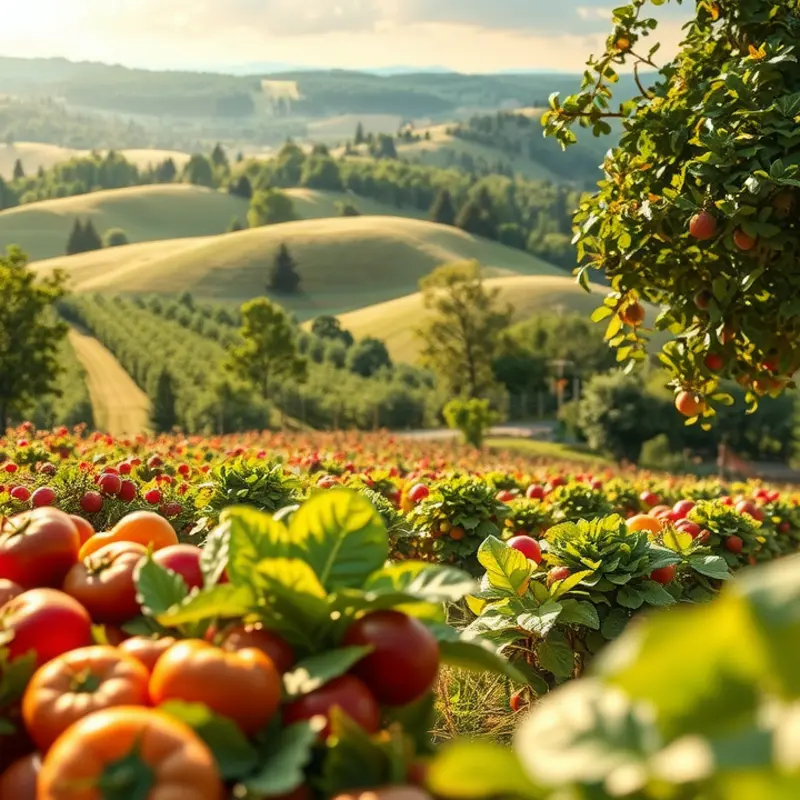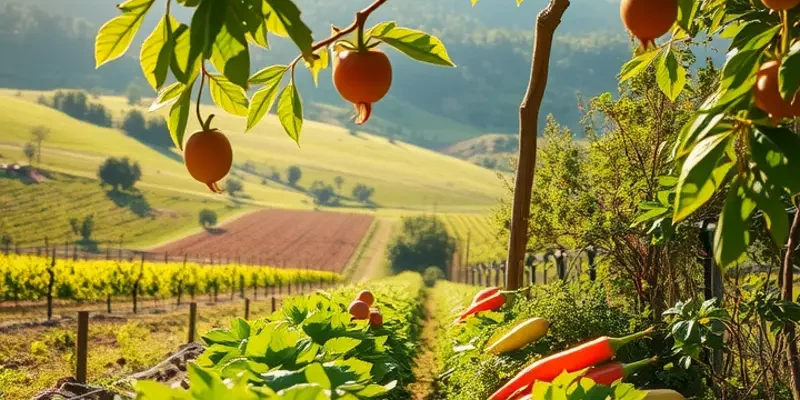Root vegetables are a staple in many kitchens, offering versatility and flavor. However, improper storage can lead to spoilage and waste. Understanding how to store these nutritious gems correctly can prolong their shelf life and ensure you get the most out of your produce. From ideal surroundings to necessary pre-storage preparations, this guide will equip you with the knowledge you need for effective food management at home.
Understanding the Ideal Storage Environment

To store root vegetables effectively, understanding their individual needs for temperature, humidity, and light is key. Each type of root vegetable can have a slightly different ideal environment, but there are some general principles to guide the storage process.
The first consideration is temperature. Most root vegetables, such as potatoes, carrots, and turnips, prefer cool conditions between 32°F and 50°F. This temperature range helps slow down metabolic processes, reducing sprouting and decay. However, not all root vegetables do well in these conditions. Sweet potatoes and pumpkins, for example, require a warmer environment around 55°F to 60°F to maintain their quality.
Humidity is another important factor. High humidity levels are essential for most root vegetables to prevent them from shriveling. A relative humidity of 85% to 95% keeps roots crispy and fresh. Beets, carrots, and radishes thrive in such moisture-rich environments. To achieve this, store them in perforated plastic bags or slightly damp sand, which helps retain moisture while allowing airflow.
Light exposure should be minimized, particularly for potatoes, which turn green and bitter when exposed to light. A dark, well-ventilated area like a basement or pantry shelf far from direct sunlight is ideal. If basement storage isn’t an option, a root cellar is a fantastic choice, though not common in all households.
Tailoring storage solutions to specific root vegetables is vital. Carrots can be stored in a refrigerator with their greens removed, packed in a loose plastic bag with a damp paper towel. Potatoes should be kept in a paper bag or open basket to allow for airflow, avoiding refrigeration as it can cause the starches to convert to sugar, affecting taste. Onions are unique as they require a dry and somewhat cooler environment separate from potatoes; storing them in a mesh bag in a pantry will suffice.
To manage these conditions, consider adding a thermometer to monitor temperature and a hygrometer to check humidity levels. Regular checks ensure that any necessary adjustments are made promptly, preventing spoilage. If humidity levels are low, introducing a shallow pan of water to the storage area can help increase moisture.
For those interested in sustainable practices, exploring eco-smart kitchen storage offers techniques that align with reducing waste while maintaining the quality of stored produce. This guide provides additional insight into optimizing your kitchen space effectively.
Remember, root vegetables are adaptable, yet still require mindful handling to ensure they remain fresh and flavorful. By understanding their ideal storage environments, you can significantly extend their shelf life, reducing waste and preserving their nutritional value.
Prepping and Storing Your Harvest

Ensuring that root vegetables are well-prepared before storage is crucial for maintaining their freshness and preventing waste. Start with proper washing, where the focus is on removing dirt clinging to the skin. Use a soft brush to clean stubborn areas, but avoid scrubbing too hard to prevent damage to the outer layer. In some cases, a gentle rinse under water is sufficient, but make sure to dry the roots completely before proceeding. Moisture is an enemy to storage longevity, promoting mold and rot.
Once washed, lay the vegetables out to dry in a single layer on a clean towel. Air drying is essential, as it removes excess moisture which could otherwise spoil the produce. After drying, sorting the vegetables is the next critical step. Separate roots with visible damage or signs of decay; these should be used first, as they will not store well and can cause others to decay faster. Healthy, undamaged roots can then be grouped for long-term storage.
For storage, opt for breathable materials, such as burlap sacks, mesh bags, or wooden boxes. These promote air circulation, crucial for controlling moisture levels and preventing spoilage. Plastic bags trap humidity and encourage rot, so they should be avoided unless specifically designed to allow airflow.
A typical mistake when storing root vegetables is piling them haphazardly. Overpacking containers can bruise the vegetables, leading to faster deterioration. Ensure that your containers are only filled enough to allow space around each item, letting them “breathe.”
Regularly checking on your stored produce is another key to reducing waste. During inspections, handle vegetables lightly to prevent bruising. If you find any showing signs of rot, remove them immediately to protect surrounding items. Incorporating a routine to assess your stored vegetables can help keep your stock fresh and minimize potential waste.
Integrating a system like this not only extends the life of your harvest but also aligns with low-waste cooking practices. Start by reviewing low-waste cooking prep strategies that can inform how you process your crops.
By focusing on these essential preparation and storage techniques, you can maximize the shelf life of root vegetables, ensuring they remain fresh and flavorful for when you’re ready to use them. It’s a mindful approach that aligns with sustainable practices and contributes significantly to a more eco-friendly kitchen.
Final words
Storing root vegetables properly is not only about extending their shelf life but also about enhancing your cooking experience. By understanding the right environmental conditions and taking the necessary prep steps, you can keep your produce fresh longer. Remember to check your stored vegetables regularly and adjust storage methods as needed. With these techniques, you can significantly reduce waste and enjoy the full flavor and nutritional benefits of root vegetables year-round.







